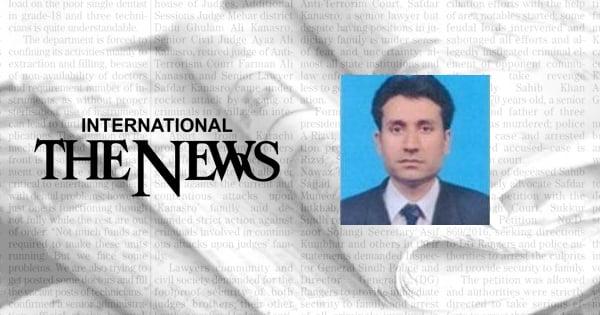When higher education goes low
When higher education goes low The News International


Pakistan’s Focus on Higher Education and the Sustainable Development Goals (SDGs)

Pakistan has seen a considerable drive to develop its higher education system, with a notable concentration on creating universities around the country. Most recently, the National Assembly passed 24 bills to establish new universities, 16 of which were introduced by members in the same session.
While we might debate the motives behind this surge, it is critical to analyze the ramifications of such an intense concentration on university growth and whether it solves the broader difficulties of the nation’s education system.
SDG 4: Quality Education
Pakistan’s emphasis on higher education, particularly universities, stems from a number of factors. The first is to make higher education more accessible. The development of new institutions is considered a method to solve the issue of access while also meeting the growing demand for higher education.
Second, increasing university education is regarded as critical for building a pool of specialized experts. Third, the establishment of universities is viewed as a means of fostering research and innovation, supporting scientific breakthroughs, and so on to solve global concerns.
The Implications of University-Centric Approach
While the establishment of universities is unquestionably a significant step forward in the advancement of education, it is critical to recognize the potential implications of focusing solely on this aspect:
- Directing considerable resources towards universities may distract attention and financing away from basic and secondary education, which provides a solid foundation for learning.
- Neglecting early schooling might exacerbate the system’s current gaps and injustices. By the age of 18, children in Pakistan can expect to have completed 9.4 years of pre-primary, primary and secondary school. However, when adjusted for learning quality, it is only 5.1 years: a learning gap of 4.3 years demonstrating the school system’s poor quality.
- The rapid expansion of the number of universities raises questions about the quality of education provided. Providing high quality education necessitates suitable facilities, qualified faculty, and a focus on research and development, all of which should be prioritized.
SDG 8: Decent Work and Economic Growth
The university-centric approach may result in an excess of graduates in some professions while the demand for qualified workers in others remains unfulfilled. This mismatch between acquired skills and job-market demands could stymie economic progress.
Pakistan ranks 63rd out of 163 nations on the World Bank’s University-Industry Linkages Index. Pakistan is much further behind India (26th) and Sri Lanka (53rd). As a result, graduate unemployment in Pakistan is highly concerning. Similarly, other surveys estimate that over 31 per cent of educated youth are unemployed, with females accounting for 51 per cent.
A More Complete and Balanced Strategy
Pakistan’s education systems need a more complete and balanced strategy that tackles the entire spectrum of learning:
- Prioritize quality over quantity. Instead of focusing on the number of universities, greater emphasis should be placed on guaranteeing the quality of education provided. Improving current institutions’ capabilities, investing in faculty development, and encouraging research-based teaching can all help raise the overall standard of education.
- Improving K12 education is critical in laying a solid foundation for children. Allocating resources to improve primary and secondary education will pay dividends in the long run, resulting in a more skilled and educated pool of students for higher education.
- Increasing technical and vocational education helps bridge the gap between formal education and the job market by providing individuals with practical skills that are in demand across industries. Pakistan can empower its citizens, stimulate creativity, and pave the road for a prosperous and progressive future by cultivating a diverse learning environment.
The Sustainable Development Goals (SDGs) provide a framework for Pakistan to align its education system with global objectives. By focusing on quality education, decent work, and economic growth, Pakistan can address the challenges it faces in its higher education system and ensure a more sustainable and inclusive future.
The writer is an assistant professor at the Pakistan Institute of Development Economics (PIDE) and can be reached at: jehangir@pide.org.pk
SDGs, Targets, and Indicators
| SDGs | Targets | Indicators |
|---|---|---|
| SDG 4: Quality Education | 4.1 By 2030, ensure that all girls and boys complete free, equitable and quality primary and secondary education leading to relevant and effective learning outcomes | – Learning gap of 4.3 years in Pakistan’s school system – Quality of education provided in universities – Number of professors in Pakistan’s universities compared to international institutions |
| SDG 8: Decent Work and Economic Growth | 8.6 By 2020, substantially reduce the proportion of youth not in employment, education or training | – Graduate unemployment rate in Pakistan – Unemployment rate among specific disciplines (e.g., engineering, computer science, agriculture, medical sciences) |
| SDG 9: Industry, Innovation, and Infrastructure | 9.5 Enhance scientific research, upgrade the technological capabilities of industrial sectors in all countries, in particular developing countries, including, by 2030, encouraging innovation and substantially increasing the number of research and development workers per 1 million people and public and private research and development spending | – Number of professors involved in research in Pakistan’s universities – University-Industry Linkages Index ranking for Pakistan |
1. Which SDGs are addressed or connected to the issues highlighted in the article?
SDG 4: Quality Education
The article discusses the concentration on university growth in Pakistan and highlights the potential implications of this focus. It emphasizes the need to prioritize quality education over quantity and improve primary and secondary education. This aligns with SDG 4, which aims to ensure inclusive and quality education for all.
SDG 8: Decent Work and Economic Growth
The article mentions the high graduate unemployment rate in Pakistan and the mismatch between acquired skills and job-market demands. This relates to SDG 8, which focuses on promoting sustained, inclusive, and sustainable economic growth, full and productive employment, and decent work for all.
SDG 9: Industry, Innovation, and Infrastructure
The article discusses the importance of research and innovation in universities to solve global concerns. It also mentions the need to enhance scientific research and upgrade technological capabilities. These points connect to SDG 9, which aims to build resilient infrastructure, promote inclusive and sustainable industrialization, and foster innovation.
2. What specific targets under those SDGs can be identified based on the article’s content?
Under SDG 4: Quality Education:
– Target 4.1: Ensure that all girls and boys complete free, equitable, and quality primary and secondary education leading to relevant and effective learning outcomes.
Under SDG 8: Decent Work and Economic Growth:
– Target 8.6: Substantially reduce the proportion of youth not in employment, education, or training.
Under SDG 9: Industry, Innovation, and Infrastructure:
– Target 9.5: Enhance scientific research, upgrade technological capabilities, encourage innovation, and increase the number of research and development workers.
3. Are there any indicators mentioned or implied in the article that can be used to measure progress towards the identified targets?
The article provides several indicators that can be used to measure progress towards the identified targets:
For SDG 4: Quality Education:
– Learning gap of 4.3 years in Pakistan’s school system.
– Quality of education provided in universities.
– Number of professors in Pakistan’s universities compared to international institutions.
For SDG 8: Decent Work and Economic Growth:
– Graduate unemployment rate in Pakistan.
– Unemployment rate among specific disciplines (e.g., engineering, computer science, agriculture, medical sciences).
For SDG 9: Industry, Innovation, and Infrastructure:
– Number of professors involved in research in Pakistan’s universities.
– University-Industry Linkages Index ranking for Pakistan.
These indicators can be used to assess the progress made in ensuring quality education, reducing youth unemployment, and promoting research and innovation in Pakistan.
4. Table: SDGs, Targets, and Indicators
| SDGs | Targets | Indicators |
|---|---|---|
| SDG 4: Quality Education | 4.1 By 2030, ensure that all girls and boys complete free, equitable and quality primary and secondary education leading to relevant and effective learning outcomes | – Learning gap of 4.3 years in Pakistan’s school system – Quality of education provided in universities – Number of professors in Pakistan’s universities compared to international institutions |
| SDG 8: Decent Work and Economic Growth | 8.6 By 2020, substantially reduce the proportion of youth not in employment, education or training | – Graduate unemployment rate in Pakistan – Unemployment rate among specific disciplines (e.g., engineering, computer science, agriculture, medical sciences) |
| SDG 9: Industry, Innovation, and Infrastructure | 9.5 Enhance scientific research, upgrade the technological capabilities of industrial sectors in all countries, in particular developing countries, including, by 2030, encouraging innovation and substantially increasing the number of research and development workers per 1 million people and public and private research and development spending | – Number of professors involved in research in Pakistan’s universities – University-Industry Linkages Index ranking for Pakistan |
Behold! This splendid article springs forth from the wellspring of knowledge, shaped by a wondrous proprietary AI technology that delved into a vast ocean of data, illuminating the path towards the Sustainable Development Goals. Remember that all rights are reserved by SDG Investors LLC, empowering us to champion progress together.
Source: thenews.com.pk

Join us, as fellow seekers of change, on a transformative journey at https://sdgtalks.ai/welcome, where you can become a member and actively contribute to shaping a brighter future.







